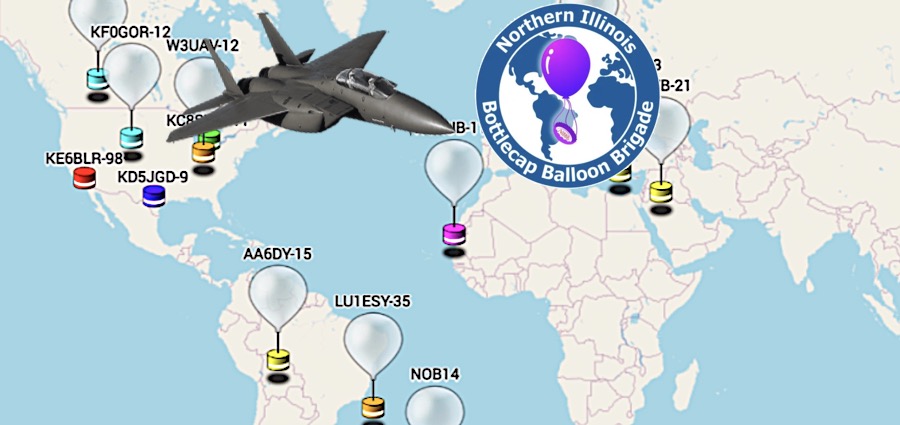ALASKA. (THECOUNT) — The Northern Illinois Bottlecap Balloon Brigade is a group of hobbyists who launch small balloons which are then tracked with an onboard ham radio transmitter.
The NIBBB recently made international headlines after claims that one of their globe-trotting balloons may be the “object” shot down a U.S. Air Force Sidewinder missile.
|
Advertisement |
The Sidewinder clocks in at a cool $400,000 – while the inflatable NIBBB ‘party-style’ balloon can be purchased for as low as $12.
Via the NIBBB website:
Since our first launch we have flown 25 balloons (actually a little more, we kept some flights to ourselves). Six ended up in trees (we found a fix for that). Six balloons never said hello (we think we have a fix for that). We had eight balloons that traveled the United States. We had nine balloons that left the United States. We had three balloons that almost made it around the world. We have two balloons flying around the world. AA6DY that has made it around the world three times and still flying. K9YO has made it around the world twice and still flying.
The balloon, which was declared “missing in action” by the Illinois-based hobbyist club on Feb. 15., has now emerged as a possible explanation one of the three mystery objects downed by four heat-seeking missiles launched by U.S. Air Force fighters since Feb. 10.
NIBBB said its ‘K9YO’ balloon last reported its location shortly before 1am GMT on Saturday, February 11 (8pm EST on February 10), near the coast of southwest Alaska.
The club’s silver-coated, party-style, “pico balloon” reported its last position on Feb. 10 at 38,910 ft. off the west coast of Alaska, and a popular forecasting tool—the HYSPLIT model provided by the National Oceanic and Atmospheric Administration (NOAA)—projected the cylindrically shaped object would be floating high over the central part of the Yukon Territory on Feb. 11. That is the same day a Lockheed Martin F-22 shot down an unidentified object of a similar description and altitude in the same general area, reports aviationweek.
The descriptions of all three unidentified objects shot down Feb. 10-12 match the shapes, altitudes and payloads of the small pico balloons, which can usually be purchased for $12-180 each, depending on the type.
The balloons can come in several forms. Some enthusiasts still use common, Mylar party balloons, with a set of published calculations to determine the amount of gas to inject. But the round-shaped Mylar balloons often are unable to ascend higher than 20,000-30,000 ft., so some pico balloonists have upgraded to different materials.
No word on if the group with be reimbursed for their downed balloon.
DEVELOPING::


